Salmon Falls Creek Reservoir Report
Nearby: Munsee Kinyon Pond Dam
Last Updated: December 16, 2025
Salmon Falls Creek is a key water resource in Twin Falls, Idaho, serving the primary purpose of irrigation.
°F
°F
mph
Wind
%
Humidity
Summary
This privately owned structure, completed in 1956, stands at a dam height of 12.7 meters and has a storage capacity of 60 acre-feet. The creek, which flows into the Snake River, covers a drainage area of 2170 acres and boasts a controlled spillway with a width of 11 meters.
Despite its low hazard potential and satisfactory condition assessment, Salmon Falls Creek poses a very high risk due to its location and the potential impact of its failure. The structure is regulated and enforced by the Idaho Department of Water Resources, with regular inspections conducted every 5 years to ensure its safety and functionality. While no emergency action plan (EAP) is currently in place, the structure meets regulatory guidelines and has not undergone any modifications in recent years.
Enthusiasts of water resources and climate in the region will find Salmon Falls Creek to be a fascinating example of water management for irrigation purposes. With its multi-arch concrete dam design and historical significance dating back to the mid-20th century, this structure plays a vital role in the local agricultural landscape. Its risk assessment highlights the importance of continued monitoring and maintenance to ensure the safety and reliability of this essential water resource.
Year Completed |
1956 |
Dam Length |
178 |
Dam Height |
12.7 |
River Or Stream |
SALMON FALLS CREEK SNAKE RIVER |
Surface Area |
19 |
Hydraulic Height |
7.9 |
Drainage Area |
2170 |
Nid Storage |
60 |
Hazard Potential |
Low |
Foundations |
Rock, Soil |
Nid Height |
13 |
Seasonal Comparison
Weather Forecast
Nearby Streamflow Levels
Dam Data Reference
Condition Assessment
SatisfactoryNo existing or potential dam safety deficiencies are recognized. Acceptable performance is expected under all loading conditions (static, hydrologic, seismic) in accordance with the minimum applicable state or federal regulatory criteria or tolerable risk guidelines.
Fair
No existing dam safety deficiencies are recognized for normal operating conditions. Rare or extreme hydrologic and/or seismic events may result in a dam safety deficiency. Risk may be in the range to take further action. Note: Rare or extreme event is defined by the regulatory agency based on their minimum
Poor A dam safety deficiency is recognized for normal operating conditions which may realistically occur. Remedial action is necessary. POOR may also be used when uncertainties exist as to critical analysis parameters which identify a potential dam safety deficiency. Investigations and studies are necessary.
Unsatisfactory
A dam safety deficiency is recognized that requires immediate or emergency remedial action for problem resolution.
Not Rated
The dam has not been inspected, is not under state or federal jurisdiction, or has been inspected but, for whatever reason, has not been rated.
Not Available
Dams for which the condition assessment is restricted to approved government users.
Hazard Potential Classification
HighDams assigned the high hazard potential classification are those where failure or mis-operation will probably cause loss of human life.
Significant
Dams assigned the significant hazard potential classification are those dams where failure or mis-operation results in no probable loss of human life but can cause economic loss, environment damage, disruption of lifeline facilities, or impact other concerns. Significant hazard potential classification dams are often located in predominantly rural or agricultural areas but could be in areas with population and significant infrastructure.
Low
Dams assigned the low hazard potential classification are those where failure or mis-operation results in no probable loss of human life and low economic and/or environmental losses. Losses are principally limited to the owner's property.
Undetermined
Dams for which a downstream hazard potential has not been designated or is not provided.
Not Available
Dams for which the downstream hazard potential is restricted to approved government users.

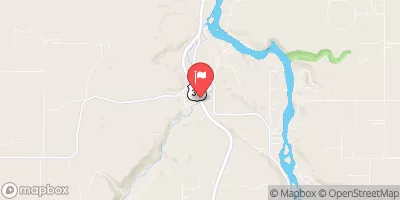
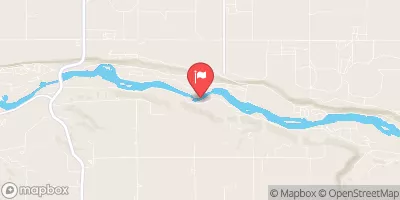
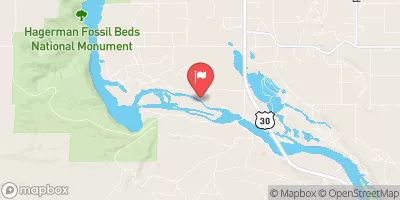

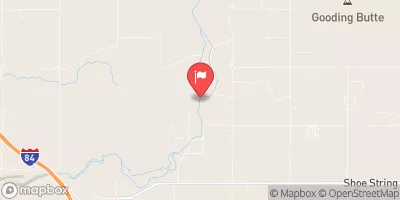
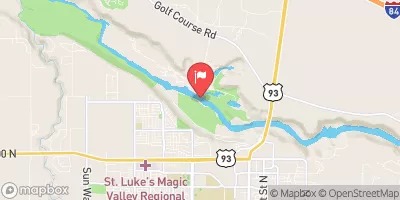
 Salmon Falls Creek
Salmon Falls Creek
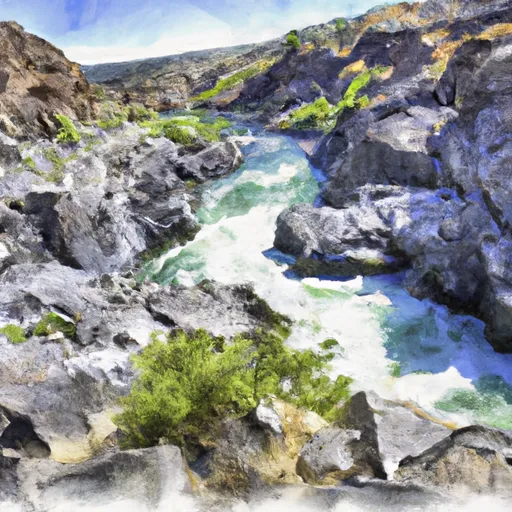 Box Canyon
Box Canyon